The Shootout on the Square
- Library Staff
- Jul 21
- 10 min read
Updated: Aug 5
This article was compiled by Local History & Genealogy staff, with research and writing contributions from Brandon Broughton, Jaden Melnick, Claire Porter, Michael Price, and Brian Grubbs.
In the early evening of July 21, 1865, James “Wild Bill” Hickok and Davis Tutt exchanged fire on the Springfield square in what many cite as the first one-on-one shootout in American history.
As we mark the 160th anniversary of this legendary event, Local History & Genealogy staff at the Springfield-Greene County Library District went back to the sources to re-examine the events that unfolded. What was found changed our perspective of the shootout.

The Birth of a Legend
On a July evening in 1865, a dispute between James “Wild Bill” Hickok and Davis Tutt came to a head when the two men faced off across the Springfield square and fired two simultaneous shots, leading to Tutt’s death. The shootout on the square has captured the fascination of generations since the late 1860s, though it was not until 1867 that the event became widely known. George Ward Nichols published his “Wild Bill” article, with accompanying illustrations, in the February 1867 edition of Harper’s New Monthly Magazine, where he propelled the legend of “Wild Bill.” The spread of the article, including embellished claims that Hickok had killed hundreds of men and baseless suggestions that the Hickok-Tutt duel was fought over a woman, built Hickok’s reputation as a Wild West gunslinger, cementing him as a seminal figure in Western lore.
However, this fateful moment on the square was not the heroic act of a Western gunfighter, nor an intentional act of legacy building, but rather the conclusion of long-simmering tensions between two men navigating life in a post-Civil War Springfield.
Hickok & Tutt’s Springfield
By the summer of 1865, the Civil War was waning, and Springfield had started to stabilize. The war had a tremendous impact on the city. Both Union and Southern forces occupied Springfield, changing hands multiple times. Springfield was the scene of two battles, but it primarily served as a supply depot for Union forces operating throughout the Ozarks.

By that summer both James Butler “Wild Bill” Hickok and Davis Tutt had established residency in Springfield. Hickok had previously lived in Springfield, serving as a member of the detective police in 1864. He left that April to serve as a scout for the Union army, and eventually returned in 1865. Tutt was also a veteran of the Civil War, serving in the 27th Arkansas Infantry in the Confederate Army. Tutt moved with his widowed mother, sister, and half-brother from Arkansas to Springfield in 1864.
Despite serving on opposite sides of the war, Hickok and Tutt became well acquainted. An early history of Greene County noted the two men were friends as the “touch of ruffianism made them both akin.” They were often seen drinking and gambling together, and were known to exchange money between one another. Hickok and Tutt could be seen walking the streets of Springfield together with revolvers around their waists.
A Game, a Debt, a Watch, and a Fateful Face-Off
In 1865, Tutt’s gambling led to mounting legal issues. At various points he was charged with illegal gambling, resisting arrest, and possession of another man’s horse. The day before the shooting, July 20, 1865, Tutt found himself in court. He faced charges for resisting arrest from that previous December. He pleaded not guilty to the charges, but after hearing the evidence and testimonies, the jury found him guilty. Tutt was fined $100 plus court costs and jailed. Thomas G. Martin posted Tutt’s bail, but the court fine and fees remained unpaid. Wild Bill Hickok historian Joseph Rosa suggests Tutt’s financial pressures may have escalated tensions with Hickok later that day.

Later that evening, Hickok and Tutt played cards in Hickok’s room at the Lyon House, a hotel on South Street at the present-day location of Arlo Bank. Many details of the evening are lost to history, but eye-witness accounts report that Hickok ended the night $35 in debt to Tutt. The two disputed the amount owed, with Hickok counting previous loans to Tutt to lower the total to $25, and Tutt, perhaps feeling pressure from his mounting legal issues, demanded higher and higher amounts, ultimately landing on $45 owed. Hickok offered his gold Waltham watch as collateral for the debt until the balance was paid.
Tutt left the Lyon House with Hickok’s watch and did not return until the following afternoon on July 21, when Hickok, Tutt, and mutual acquaintance John W. Orr drank and debated the debt on the Lyon House porch. Another acquaintance, Eli J. Armstrong, visited the trio and tried to help settle the debt. Orr and Armstrong’s efforts were to no avail, however, and Tutt ended the exchange by again demanding $45 and stating he’d keep Hickok’s watch until the full amount was paid.
Hickok responded, “he would rather have a fuss with any man on earth than [Tutt],” Tutt agreed to set the debate aside, and eventually they parted ways. However, around 6 p.m. they both found themselves on opposite sides of the Springfield square, tensions still simmering from their earlier exchange.
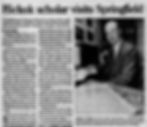
The Shootout
At around 6 p.m. on July 21, 1865, Tutt headed south toward the square from Baker Arcade (the alleyway between the Heer’s and State buildings) and walked an estimated 30 paces past the courthouse. Hickok stood near Robertson and Mason’s store, on the southwest corner of the square and South Street.
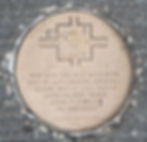
Eyewitnesses report that Hickok saw Tutt and started out into the square, some noting that Hickok walked toward Tutt, others saying he walked toward Crenshaw’s store. Many Hickok historians, including Rosa, used these accounts to place Hickok’s location on the southeast side of the square. However, a Local History & Genealogy staff member discovered newspaper ads in period newspapers which identify Crenshaw’s store as being on the southwest corner of the square, contradicting long-held narratives of the shootout.
Hickok reportedly warned Tutt not to come any further into the square with his watch. In response, Tutt drew his pistol and fired at Hickok. Hickok quickly drew and shot his pistol as well. The near simultaneous shots sounded as if only one shot had been fired.
Tutt’s shot missed Hickok completely, but Hickok’s shot pierced Tutt through the ribs. Tutt turned and staggered toward the courthouse, where he collapsed on the steps and died.
History Rediscovered
For over 100 years, much of the aftermath of the shootout was told through word of mouth and passed-down accounts. However, an accidental discovery changed the prevailing perspective on that fateful July night.
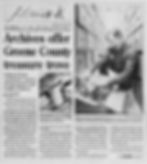
In the summer of 1997, Robert Neumann was sorting through boxes of unprocessed records at the Greene County Archives. The boxes contained the historical court proceedings and other record sets for the county.
“All of these court records were mixed,” Neumann recalled. “There was just no rhyme or reason to the documents in each box. They were grouped by decades. There would be some in the 1850s, then 1860s, then it would jump to the 1880s. They would be all over the place.”
One day in late July almost exactly 132 years after the shootout, Neumann opened the next box to be sorted and indexed. He remembers pulling out a folder, opening it, and reading the 1865 court documents contained within. It was at this moment he realized what he held.
“I ran to the clerk’s office and said, ‘Look what I found! Look what I found!’” he recalls.
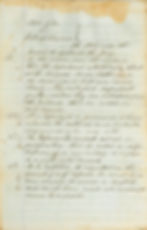
Neumann had uncovered the court proceedings and coroner’s report for the 1865 Hickok and Tutt shootout. These records were long thought lost and destroyed. Neumann recalls that prior to moving to the Greene County Archives, these boxes of historical records were kept in an old maintenance shed. Over time many of the boxes were damaged and records were lost. “It was serendipitous that this box survived,” he says.
Neumann remembers calling Rosa in England to tell him about the discovery. These documents reshaped the understanding of the shootout between Hickok and Tutt.
“It was a big deal to me. Historically, speaking, it was the highlight of my life,” Neumann says. “To find something that everyone thought was destroyed, and they actually hadn’t been destroyed… To say finding these documents was exciting is an understatement.”
Today, these records — and countless others — are preserved at the Greene County Archives. It is work like this that exemplifies the importance of the libraries, museums, and archives. Springfield’s dedicated professional staff work to preserve the documents and other items that tell the history of our city and the greater Ozarks region.
The Aftermath
With Hickok’s trial documents and Tutt’s coroner’s report now accessible, the aftermath of the two men’s face-off becomes a little clearer.
Immediately after the shooting, Major Albert Barnitz of the 2nd Ohio Cavalry ordered Hickok’s arrest, and he was turned over to the civil authorities on the charge of murder. The next day, Hickok was released on bail (paid by several men around town).
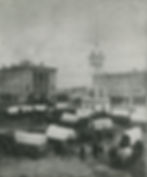
On July 22, one day after the shooting, Greene County coroner J. F. Brown began an investigation into the death of Davis Tutt. Brown called for six jurors to review evidence and subpoenaed witnesses from the shootout.
Several individuals thought only one shot was fired; however, other witnesses saw a flash and smoke from Tutt’s revolver. An examination of Tutt’s pistol directly after the shooting found one chamber fired and an expended percussion cap.
After reviewing the evidence and hearing the witnesses, Brown concluded that Tutt was killed by a pistol shot. The coroner’s jurors found evidence that Hickok was responsible for the death, and the charges were amended to manslaughter on July 24.
Hickok stood trial on August 5 and 6, 1865. His defense attorney was John S. Phelps who later served as the Governor of Missouri from 1876 to 1881. The judge for the trial was Sempronius “Pony” H. Boyd, a former mayor of Springfield and congressman. Two of the trial jury members were reportedly former officers who served with Hickok in the Civil War.
After the evidence had been presented, Judge Boyd instructed the jurors that if they found Hickok had willingly engaged Tutt, then he was guilty. However, if they found Hickock acted in self-defense, then he was to be acquitted.
The jury deliberated for only 10 minutes and found Hickok not guilty.
Laying a Conflict to Rest
In 1865 many residents of Springfield questioned if Hickok got away with murder. For many, the dispute resolved around possession of Hickok’s watch — Hickok warned Tutt what might happen if he did not return it. Some believed the shootout was premeditated. Some even believed that Hickok was the only one to fire. Although the trial evidence and eyewitness testimonies suggest otherwise, Hickok’s reputation as a gunfighter grew as his exploits spread across the American Frontier. Accessing original documents, trial records, and published firsthand accounts from the time period help historians see through inflated legend to uncover and preserve the truth.

After the shooting, Davis Tutt was buried in the old city cemetery. In 1883, his brother Lewis had his body moved to Maple Park Cemetery (300 W. Grand St.). His grave can be found in Block 57, Lot 24.
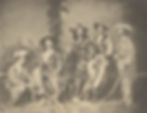
Following his exoneration, Hickok ran for Springfield City Marshal in September 1865 and lost. In January, he moved to Fort Riley, Kansas to work as a government detective. He spent several years in Kansas in various law enforcement roles before eventually returning to Springfield in the fall of 1872.
Hickok made his living here by gambling until William Frederick “Buffalo Bill” Cody reached out. The two met years earlier, and Cody invited Hickok to join his Wild West traveling show. Hickok left for New York City in the summer of 1873, never returning to Springfield again.
For Further Reading
They Called Him Wild Bill: The Life and Adventures of James Butler Hickok, by Joseph Rosa
The West of Wild Bill Hickok, by Joseph Rosa
Wild Bill Hickok: The Man and his Myth, by Joseph Rosa
Harper's New Monthly Magazine, volume 31, February 1867
The Wanderer: James Butler Hickok and the American West, by Craig Crease
Want more local history news and stories delivered directly to your inbox? Sign up for Local History & Genealogy's quarterly newsletter, Footnotes.

